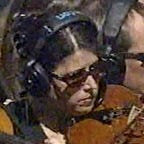The Amazonians
post #3
We have come to believe that belief in God is believing in the power to change and that he/she can be changed by us. Our idea of a God that cares more about our morality than he does about us becoming more of who we are is not something I can come to terms with. Staying so far away from the wounds of Christ, refusing to put our fingers in the pain that exists all around me can no longer be the way that I live. To live is to die and in that death we gain something profound, a oneness with Christ as we choose to plunge our fingers in his open wounds.
We have become aware of the correlation between the working of our triune brain, the triune aspects of God, and the triune approaches to trauma recovery outlined by Bessel van der Kolk (2015). It may seem that we function solely from the intellect that resides in our prefrontal cortex, however, Peter Levine (2010) and Bessel van der Kolk stress the three-part function of our reptilian brain, limbic system and prefrontal cortex (with a supporting and informing embodied visceral system). Is it coincidental that there are three distinct aspects to our Creator? Shelly Rambo reminds us of the distinct personalities of the Father, Son and Holy Spirit and the creative unlocking of meaning that allows for life after trauma.
Connected to multiplicity and becoming, we are talking about individual movement from an adolescent life, where we are defined by world and cultural relatedness, to an entrance into wandering into shadow, darkness, and soul. In adolescence we master our social, practical selves, but we need community members who see and know us to introduce us into a stage of questioning, where we look at whether or not we buy all that we’ve learned to know. It’s in this process that we feel like our life falls apart before it can come back together in a deeper way. We love the line “to live is to die” because the movement into adulthood, our life’s “autumn,” is about moving into the darkness of the soul and experiencing a kind of ego death for the first time.
Our group engaged with the inevitability of pain, suffering, trauma, and our resultant emerging view of God and theology. We have reflected on physical, spiritual, and psychological development, and with this, our younger selves and how the our spiritual upbringings and the messages we received have shaped who we are today. We have shared a collective desire for renewal, to re-find faith that feels broad enough, deep enough, and flexible enough to address the pain and trauma of our lives and others. Our primarily integrative ideas have revolved around the paradoxical reality of suffering; how our selves and our faith are built as a reflection of our experiences, deeply subject to change, yet carrying the hope of renewal. With this, we have explored the need for a flexible, growing faith that expands with our experiences, allowing us to engage with trauma as well as the full scope of emotional experiences that come with living a life.
…
Bibliography:
Levine, Peter A. In An Unspoken Voice: How the Body Releases Trauma and Restores Goodness. Berkeley, CA: North Atlantic, 2010.
Plotkin, B. Nature and the Human Soul. Novato, CA: New World Library, 2010.
Quash, Ben. Found Theology. London, UK: Bloomsbury, 2013.
Rambo, Shelly. Resurrecting Wounds. Waco, TX: Baylor University Press, 2017.
Rambo, Shelly. Spirit and Trauma: A Theology of Remaining. Louisville, KY: Westminster John Knox, 2010.
Van Der Kolk, Bessel. The Body Keeps the Score: Brain, Mind, and Body in the Healing of Trauma. London: Penguin, 2014.
Wiman, Christian. My Bright Abyss. New York, NY: Farrar. Straus and Giroux, 2013.
